
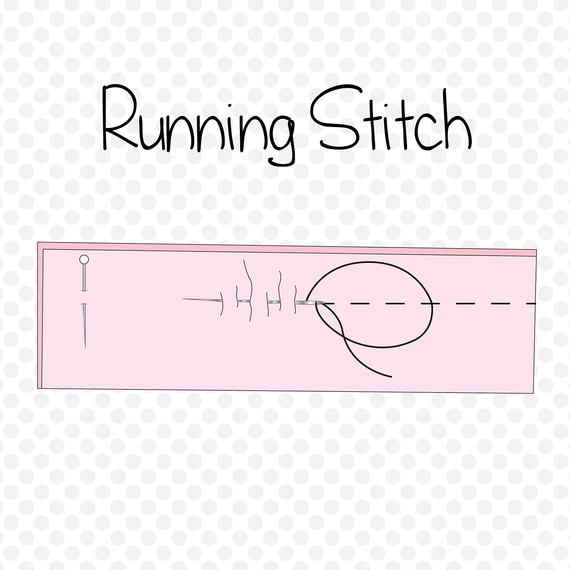
1. The Running Stitch
What is the running stitch? This stitch is a very short and even stitch mostly used for seaming, mending, and gathering on lightweight or delicate fabrics. If you don’t own a sewing machine, you can sew a garment together with a running stitch since it is meant to be permanent.
How do I sew a running stitch? Working from right to left, weave the tip of the hand needle in and out of the fabric a few times before pulling the needle through. Make sure to stitch closely and maintain even space between stitches.
Why should I try it? Use it to repair small holes in sweaters and socks, make a pretty tomato pincushion, or gather the skirt of a DIY tank dress.
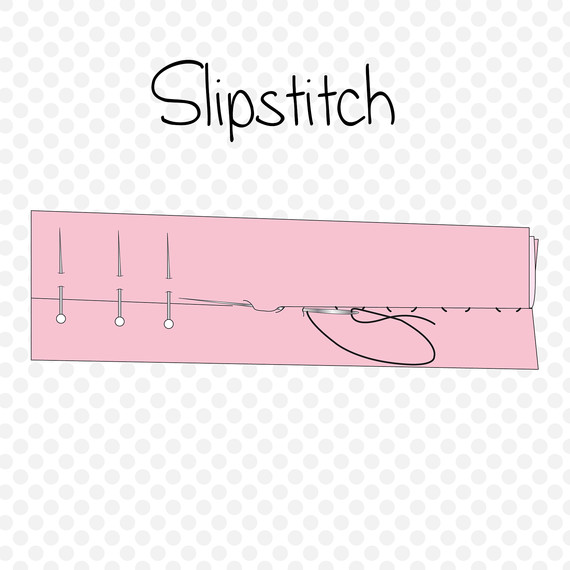
2. The Slip Stitch
What is the slip stitch? This stitch is meant to be invisible and formed by putting the thread under the fold of a fabric. It is mainly used to join to folded edges, or even one pressed edge to a flat piece of fabric. You will most likely use it if you sew a lining to a jacket and leave a little section open to pull the garment through — a slip stitch will join the opening.
How do I sew a slip stitch? Work from one side to the other and first knot the thread and bring threaded needle out one of the folds. For each stitch, slip the needle through the fold for about 1/4 inches and insert needle on opposite fold right beside where you just stitched again for 1/4 inches and pull threaded needle through both folds. If you are just starting out, try stitch one fold at a time instead of two like pictured.
Why should I try it? It’s a fast and easy stitch to mend a seam, close a pillow cover, or sewing the turned lining of a vintage jacket.
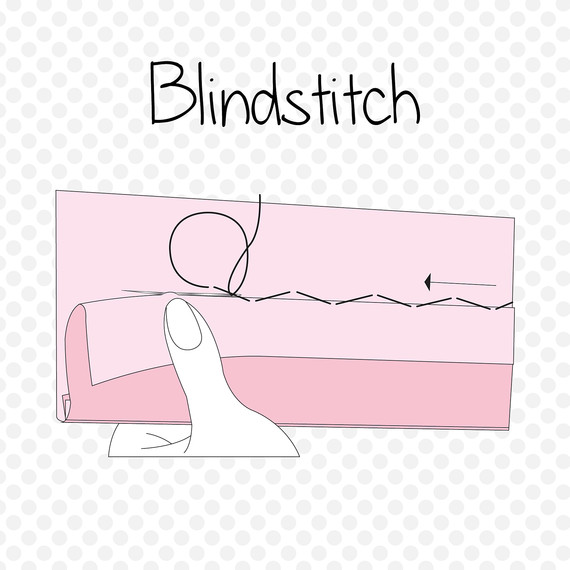
3. The Blind Stitch
What is the blind stitch? This stitch is a fast and easy hand stitch, meant to be invisible from both the right and wrong side of the garment. The stitches are taken between the garment and the hem making no stitches visible (just make sure to use a matching thread color to your fabric). This stitch can also be used for sewing facing edges inside the garment so they don’t flop around inside.
How do I sew a blind stitch? Working from right to left, and the edge fold back slightly take one little horizontal stitch on the garment grabbing a few fabric fibers and pulling your threaded needle through. Make sure to knot your thread first. Take another tiny stitch half an inch away on the opposite side (whether it be the facing or the hem). Proceed to stitch and alternate between the two sides keeping the distance between stitch the same and never more than half an inch.
Why should I try it? Try out this hand stitch when hemming curtains, trousers, skirts, or this sleek wrap blouse.
Try One of Our Projects to Practice Hand Sewing
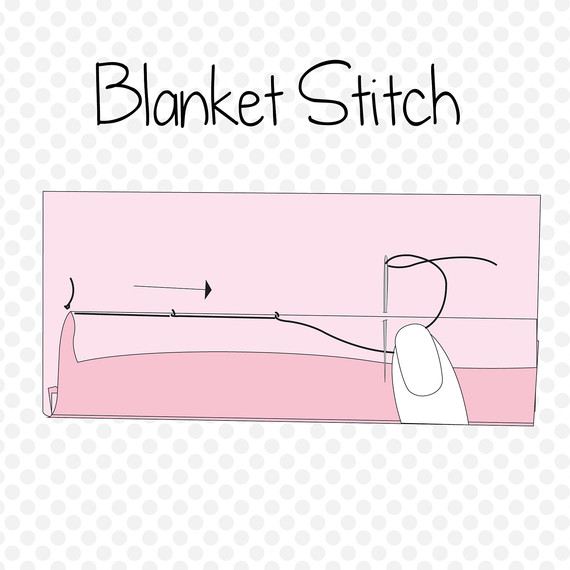
4. The Blanket Stitch
What is the blanket stitch? This stitch joins two layers of heavier weight fabric quickly and effectively. This stitch can be used for hemming or joining a facing to a garment and great for fabric that have a high pile (like faux fur, velvets, and minky fabric).
How do I sew a blanket stitch? Work from left to right with the one edge slightly folded back. Knot your thread and insert into the garment and the fold of the opposite and bring your threaded needle through. With your needle positioned facing towards you and perpendicular to the seam, hold the thread down with your thumb as pictured and insert the needle first into the garment and then into the fold. Proceed stitching and space about 2 inches apart.
Why should I try it? Try out this stitch by customizing a wool blanket, reinforcing the cuffs of a dress shirt, or this ultra-soft cropped sweater.
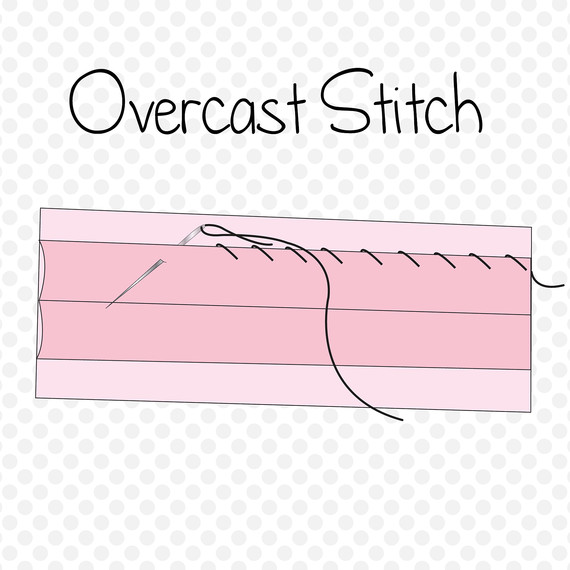
5. The Overcast Stitch
What is the overcast stitch? You can use this stitch to finish a fabric’s edge when you don’t have a serger. This stitch is primarily used to prevent further fraying or unraveling of the fabric. The more the fabric frays, the closer your stitches need to be together.
How do I sew a overcast stitch? Working from either direction, make small diagonal stitches over the edge wrapping the fabric edge with the thread. You can space the stitches however far or close apart, just make sure they are uniform.
Why should I try it? Try this stitch out on this tweed cowl dress.
10 Genius Tricks for Your Clothes
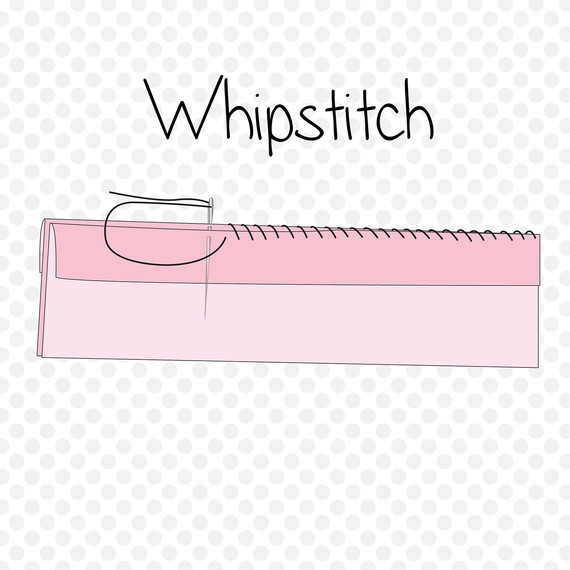
6. The Whip Stitch
What is the whip stitch? This stitch is a variation of the overcast stitch, the only differences being that the needle is inserted using straight lines (not diagonal) and the needle goes through multiple layers of fabric instead of just one fabric edge. You can use this stitch to join two finished edges together or fuse an unfinished edge to another edge. You can use this stitch as a permanent stitch as well when mending or sewing a garment (or pillow) together.
How do I sew a whip stitch? Working from either side insert the threaded needle (and knotted at the end) straight from the back edge through to the front keeping the stitch as close as possible to the fabric edge. Catch a few fabric threads in this stitch and continue until the seam is finished, making sure that the stitches are evenly spaced apart.
Why should I try it? Try this stitch out on chain-trimmed pillows, a floor runner, or tie-waist dress.
Ready to Test Your Skills? Try One of Our Sewing Projects!
SOURCE:http://www.marthastewart.com/1504764/handy-sewing-stitches-fix-tailor-anything